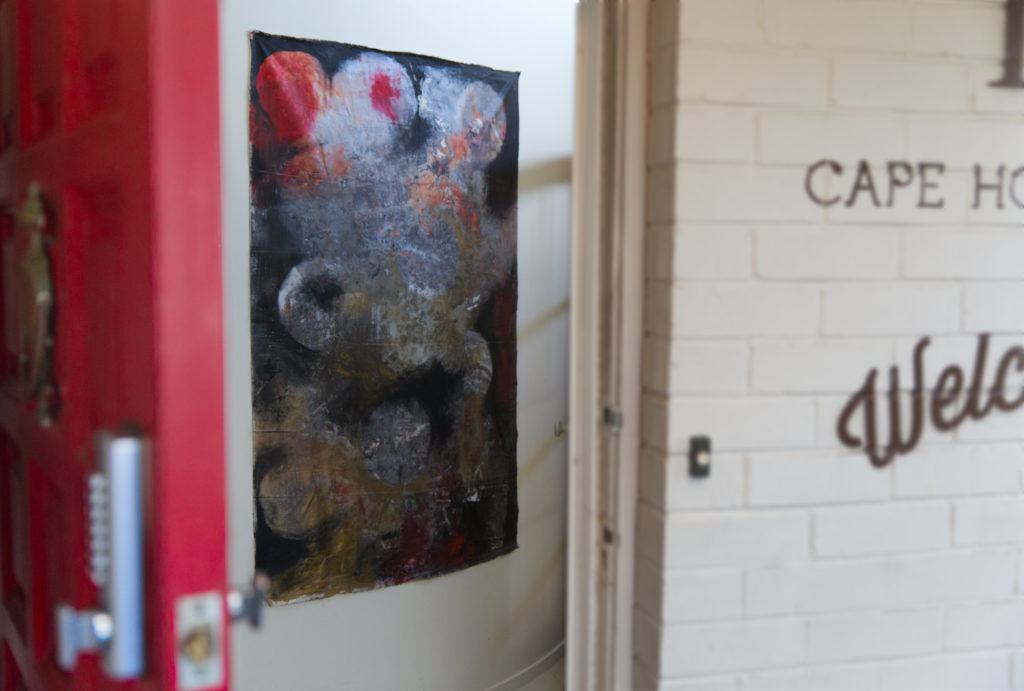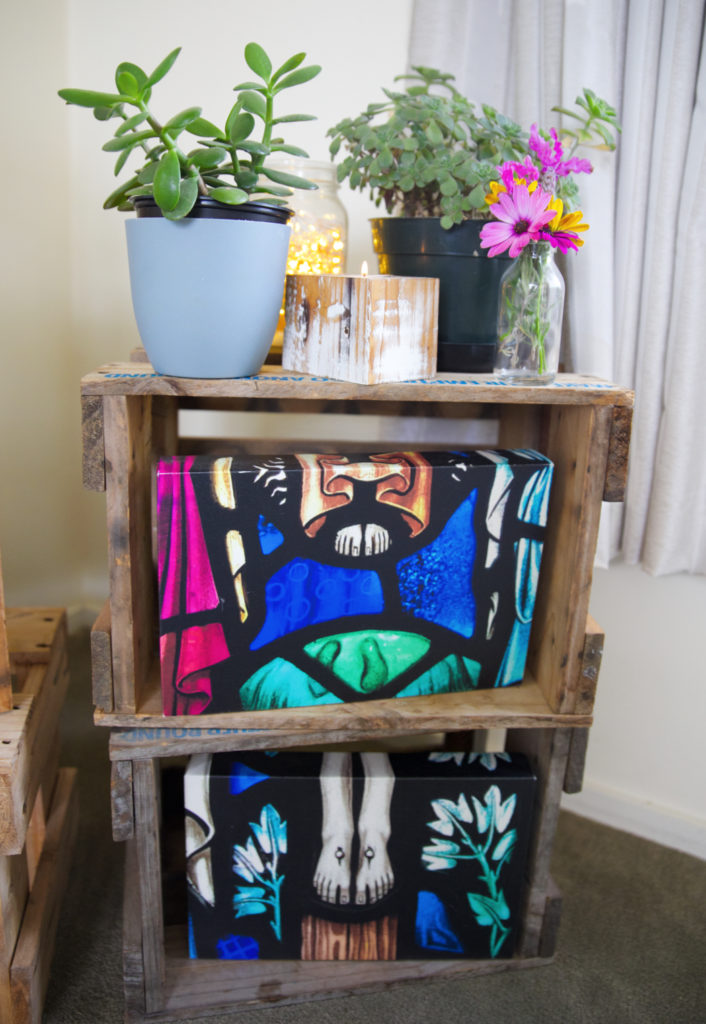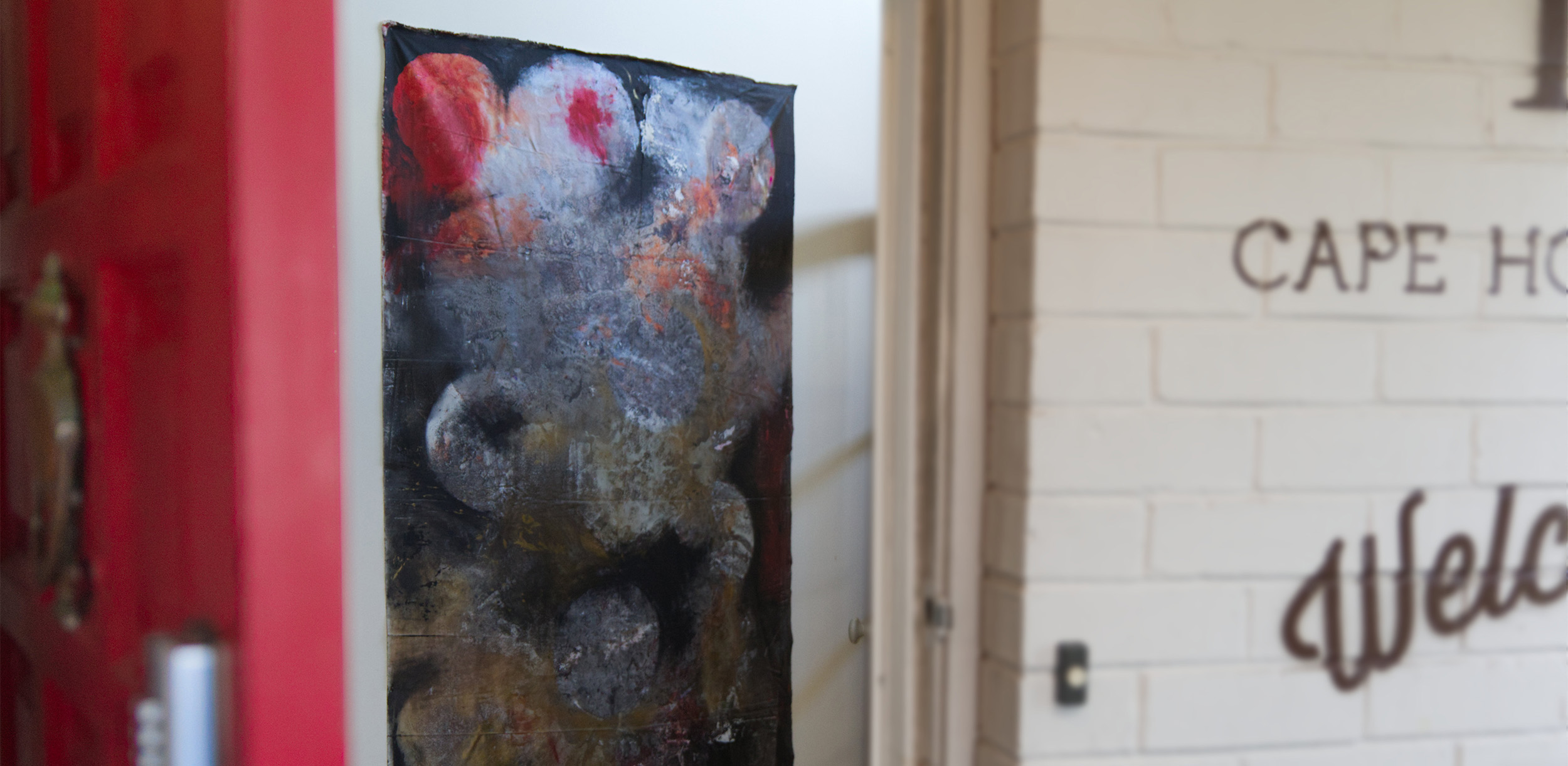
22 Oct Home is Where the Art is
Wandering up the gentle curve of Cape Horn Road with our new “lockdown diversion” skateboards under our arms, Benji stopped and pointed down. “Look Dad … a face!” Sure enough, a patch of tarseal had been brought to life by three rusty leaves and a wry-grin-of-a-twig. We laughed at the asphalt expression and hunted for other faces as we walked: a happy face; a sad face; an angry face (literal road rage). I’ve learned a lot about myself by observing my son as we share a number of ways of seeing and being in the world—including a tendency towards fun and distraction (witness the skateboards) and a visual orientation that often notices or imagines things, like faces in the fallen leaves.
This “pictorial bias” took the shape of a rekindled hobby during the lockdowns of 2020. I captured some simple daily images on my phone for a “Gratitude Picture Journal” and was further inspired by the wonderful photo essays from Melody Cooper and Juanita Madden to take my larger cameras out of storage. Finally, in November, I convinced Fuller Theological Seminary to approve some overdue credits as an independent course in Theology and Photography. So, what is my suggested practice for this month? Nature walks? Photography? Skate-boarding? Well, sort of …
The theme of this Common Ground is “Home,” and it reminded me of a book from my Fuller reading list, Placemaking and the Arts: Cultivating the Christian Life by Jennifer Allen Craft. As the title implies, Craft explores some of the ways in which the (particularly visual) arts can transform the spaces we inhabit in ways that, in turn, have a profound effect on us. This is a broad theme that echoes across a range of visual disciplines, including architecture and even urban planning: we shape our spaces and then our spaces shape us.
These latest rounds of lockdown have forced us all (especially Aucklanders) back into our homes for longer periods than usual. This has given me time to reflect on the internal spaces of our home in light of her challenge. What kind of place has our family created and what part, specifically, has art played in creating it? What wider values are on display? Throughout her book, Craft is challenging us all to become better “noticers,” and, at the end of this chapter, she summarises a number of ways in which art can be beneficial in the home. For our practice this month, I invite you to take a three-step visual inventory of your place. This is an opportunity to informally and prayerfully catalogue the visual art and craftworks that are in your home and to consider them in light of some reflective questions. As you wander, mentally or (even better) physically, through each room—considering the art you have or want to add—try to keep an open heart as well as open eyes. The displaying of art can easily become an exercise in pretentiousness or posturing. For that reason, I have avoided the highly-charged debates around “What counts as art?” or “High art vs lower forms?” You will see in the selection from our place that there is nothing to be elitist about—most of our images and craftworks have been bought in cafés and op shops, with a couple of cheap poster prints of better-known works. That said, many readers will have developed a much richer knowledge and appreciation of great art than we have—and that should be on display too. Although one of Craft’s meta-reasons for home art is hospitality, that doesn’t mean it needs to be appreciated immediately or by everyone—most good art in the home should invite the telling of a story.
I. Consider how your art images Christian faith
The church has had an unfortunate reputation for dismissing or devaluing any art that wasn’t overtly “Christian.” The historical reasons for this are complex, and we won’t unpack them here. Suffice to say that Craft is only one of many theologians, artists, and commentators who are helping the church rediscover the fact that art doesn’t have to be overtly theological or spiritual in order to form us in wonderful ways. But the answer lies not in replacement but in addition. In other words, as we redeem and re-value the previously neglected forms, there is no need to over-react and reject images or icons that are overtly theological or spiritual in nature. As Craft writes: “The arts’ presence in our home can serve as reminders of the baptized life … or images that convey spiritual truths that stretch and mould us into hospitable people” (Placemaking and the Arts, 118).
How is my baptised life or my community of faith imaged in my home?
What additions could I make? An illustrated Christian Year Calendar? A photo of my church building or community? A simple cross? Prayerfully pause and reflect.
II. Allow art to reveal other aspects of your life
The artefacts that we acquire and display will often announce the places, relationships, themes, and memories that contribute to who we are. They become an extension of our sense of self: work by a local artist; craftwork from an overseas trip; images of favourite places and faces.
Photography often plays an important role here. I remember a friend quoting a 2013 Time Magazine article titled, “The Me Me Me Generation”: “Whereas in the 1950s families displayed a wedding photo, a school photo and maybe a military photo in their homes, the average middle-class American family today walks amid 85 pictures of themselves and their pets.” We laughed and winced—not least because we recognised in ourselves some of the narcissism being critiqued. Admittedly, 85 selfies sounds like too many! But now, having read authors like Craft, I have lost some of my cynicism around the role of personal photographs. My own dad passed away before any of our children were born, and they only know him through the pictures displayed in our home. Even the simple photo of Julia and me caught in shared laughter on our wedding day speaks something important into the atmosphere on days when laughter is scarce.

We bought these three from our local op shop for $15. I remember school holidays at my granddad’s place using exactly the same cutlery set. Pictured is Sophia, our youngest, with egg and soldiers. 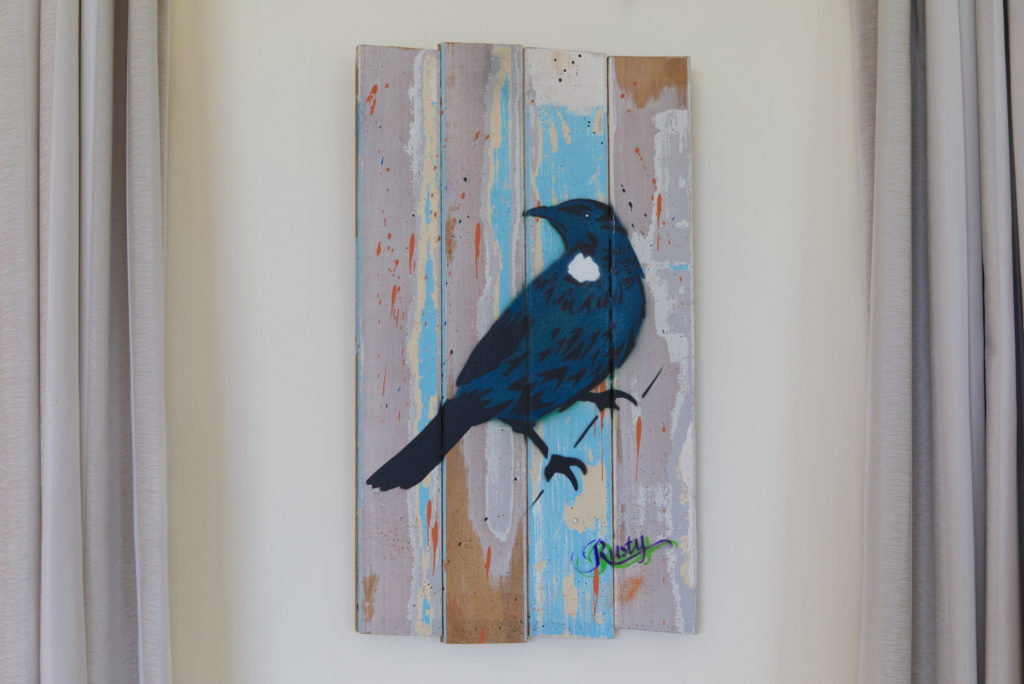
“Tui” by Rusty. In their original building, Crave café used to regularly feature local artists. This tui is one of many bird images in our home—a tribute to the native birdlife around our home at Cape Horn, Auckland.
Take a moment to reflect on the places, relationships, themes, and memories that have contributed to who you are. Which of these are on display?
III. Observe where art adds beauty to other people’s homes… and your own
Craft again: “While not all art must be beautiful, the context of the home is a space that calls for beauty, seeking out in material form the desires of our hearts for comfort and love. … Beauty creates a hospitable place for others to dwell … as they question or comment on a drawing or photograph [it] opens up a space for storytelling and connection” (119-20). When a panel of educationalists and psychologists ran a national “personality test” on us, aesthetic appreciation wasn’t a trait that topped the list. Instead, the authors found that Kiwis are best known for their pragmatism, earthiness, common sense, and restraint. Overt displays of beauty might be something we could all work on.
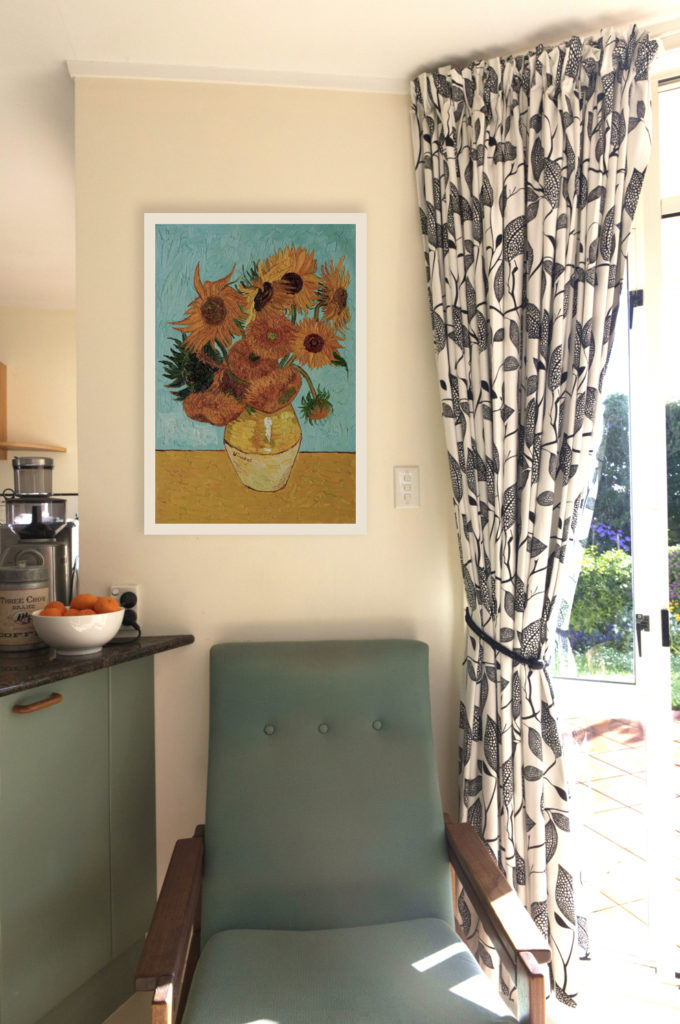
“Sunflowers” by Vincent van Gogh. We ordered this a month ago, but there were none in the country and we are still waiting. So it’s worth cheating and photoshopping things in to test the result! 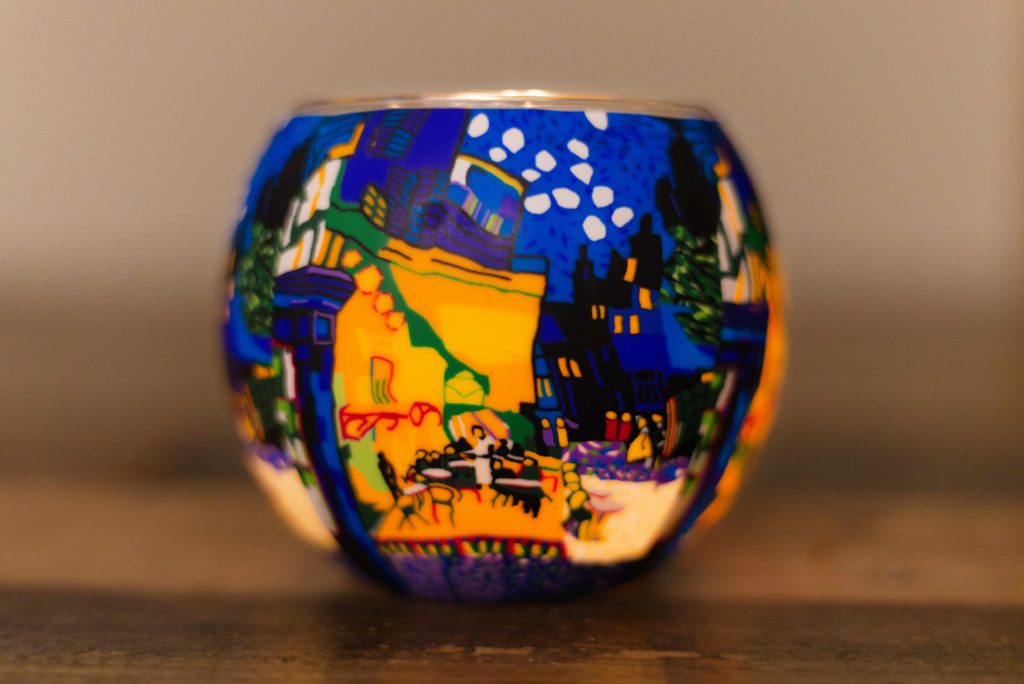
“Café Terrace at Night” by Vincent van Gogh. We’ve also got this in poster form. The orange-yellow light spilling out an invitation to come inside captures something of the warm hospitality we have received and aspire to extend.
When was the last time you gave yourself permission to make or buy a work of art for no other reason than the beauty and delight that it brought into your life?
Do you notice the artwork and images on display in other peoples’ homes? How might you engage with them more?
(Images: Supplied by Sam Bloore)


